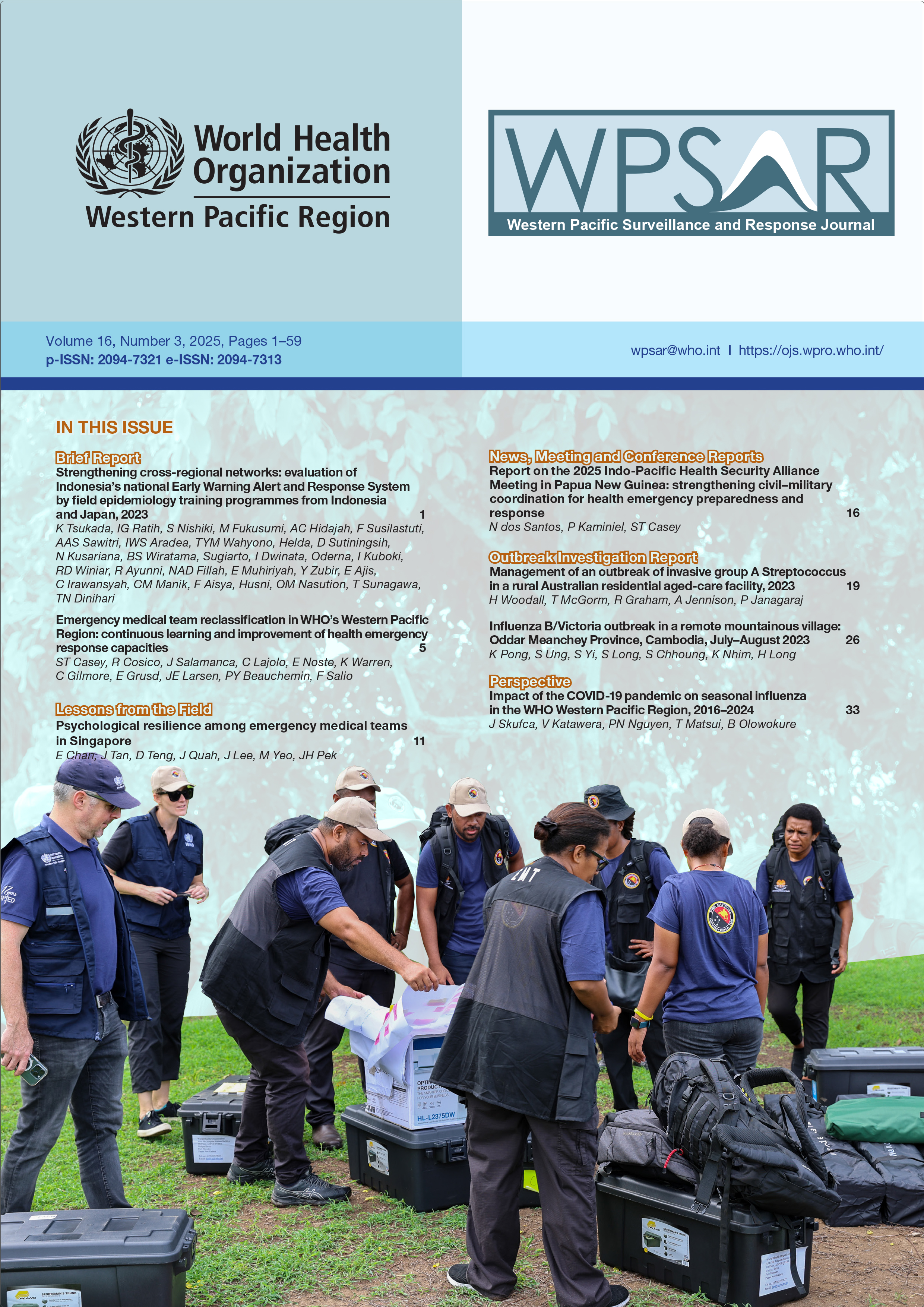Progress on International Health Regulations (2005) core capacities in WHO's Western Pacific Region
DOI:
https://doi.org/10.5365/wpsar.2025.16.3.1245Keywords:
International Health Regulations, World Health Organization, global health, emergency preparedness, intersectoral collaborationAbstract
The International Health Regulations (2005; IHR) are a legally binding instrument for the 196 States Parties, including the 194 Member States of the World Health Organization (WHO), requiring them to build and maintain capacities across critical domains to prevent, detect and respond to public health threats. In an analysis of 15 IHR (2005) core capacity scores reported by States Parties in WHO’s Western Pacific Region from 2021 to 2023, average regional scores increased from 68% in 2021 to 72% in 2022, then declined to 66% in 2023. Seven States Parties maintained consistently strong scores (>=85%), whereas nine exhibited fluctuations of at least 10 percentage points. Categorizing States Parties into three groups based on geographical and economic characteristics highlighted that core capacities such as financing, food safety and the control of zoonotic diseases were areas requiring additional capacity-building, particularly among Pacific Island States Parties. Low- and middle-income States Parties also reported notable gaps in financing and infection prevention and control. These findings underscore the need to strengthen national coordination and accountability mechanisms. The strategic establishment or designation of a National IHR Authority – a key amendment introduced in the 2024 revision of the IHR – has the potential to enhance implementation by ensuring institutional leadership, fostering multisectoral collaboration and facilitating resource mobilization. However, national efforts alone may not be sufficient. Regional coordination will enhance political commitment and promote coordinated action, thereby strengthening preparedness and response capacities across diverse contexts and supporting more effective implementation of the IHR (2005).

